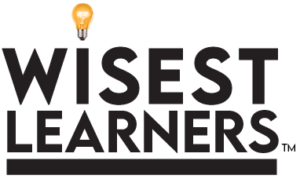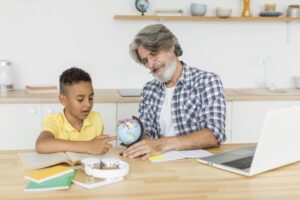Have you ever found yourself repeating a phrase or action you learned from someone influential in your life? Whether it’s a parent, teacher, or historical figure, modeling is a potent form of learning that often happens without us even realizing it.
As a father of two wonderful children, a 10-year-old boy, and a 6-year-old girl, I had the chance to spend some quality time with them one weekend after a particularly busy week. We headed to a local park with a pond. As we sat there, I began to skip stones across the water, a skill my father had taught me. My son watched closely and then tried to copy my technique. His first throw was more of a ‘plunk’ than a ‘skip’, but he was persistent. He adjusted his grip and stance with each throw, trying to mirror my actions.
My daughter, eager to join in, decided she’d try it too. With gentle guidance, she expertly skipped stones like her brother after just a few attempts. It struck me then that neither of them asked for a step-by-step tutorial. They watched, learned, and copied. This seemingly simple afternoon activity was a profound lesson in the power of modeling.
Modeling is not just about imitating actions. It’s about internalizing the values, behaviors, and skills we witness in others. The idea of modeling is based on the idea that we can inspire and guide others through direct instruction and by embodying the principles and behaviors we wish to instill. It’s a silent form of teaching where actions speak louder than words.

Throughout history, many significant figures have recognized the power of modeling. Mahatma Gandhi famously said, “Be the change you wish to see in the world.” He understood that to inspire change, one must first exemplify it.
When discussing the power of modeling and its profound impact on learning, we cannot overlook the contributions of Dr. Albert Bandura and his groundbreaking experiments in the 1960s. These experiments provide a fascinating glimpse into how children learn by observing others.
Bandura’s famous 1961 “Bobo Doll Experiment” investigated whether children could acquire social behaviors, like aggression, through observation and imitation. He studied 72 children, ages 3 to 6, from the Stanford University Nursery School. Bandura exposed them to two contrasting scenarios: an adult model acted aggressively towards a Bobo doll, an inflatable clown-like toy, and another where the adult played non-aggressively with the same doll. After frustrating the children by not allowing them to play with toys, they were later placed in a room with the Bobo doll. The results were striking: kids who observed the aggressive model were notably more likely to display aggression toward the doll, with boys showing higher levels of aggression than girls. However, both genders exhibited increased aggression compared to those who saw the non-aggressive model. Children mimicked the exact aggressive actions they saw and even improvised, suggesting that they had internalized the aggressive behavior.
Bandura’s Bobo Doll Experiment highlights the influential role of modeling and observational learning, revealing that children not only mimic observed behaviors but also internalize them as part of their actions. This study marked a turning point in understanding how various external factors, including media and the environment, might influence a child’s behavior. As our world evolves, especially in this digital age with abundant exposure to various behaviors through television, video games, and the Internet, Bandura’s findings remain to serve as a timeless reminder of the importance of positive role models and the need for monitored media exposure for young, impressionable minds.
Recognizing the power of modeling carries a responsibility, particularly for parents. Those who look up to us learn from our positive and negative behaviors. It’s essential to remember that modeling isn’t about perfection. Everyone makes mistakes. What truly matters is how we address these missteps, which includes taking responsibility, offering apologies when needed, and making amends. It’s about showcasing resilience, integrity, and the continual journey of self-improvement.
That day at the pond, I was reminded of the profound influence we can have on those around us, not just through our words but our actions. Whether we’re teaching our children to skip stones or imparting life lessons, the power of modeling is undeniable.
As we move forward in our journeys as parents, educators, mentors, or simply individuals, let’s remember the silent lessons we teach daily. Let’s strive to be the best models we can be, understanding the ripples of our actions in the pond of life.





